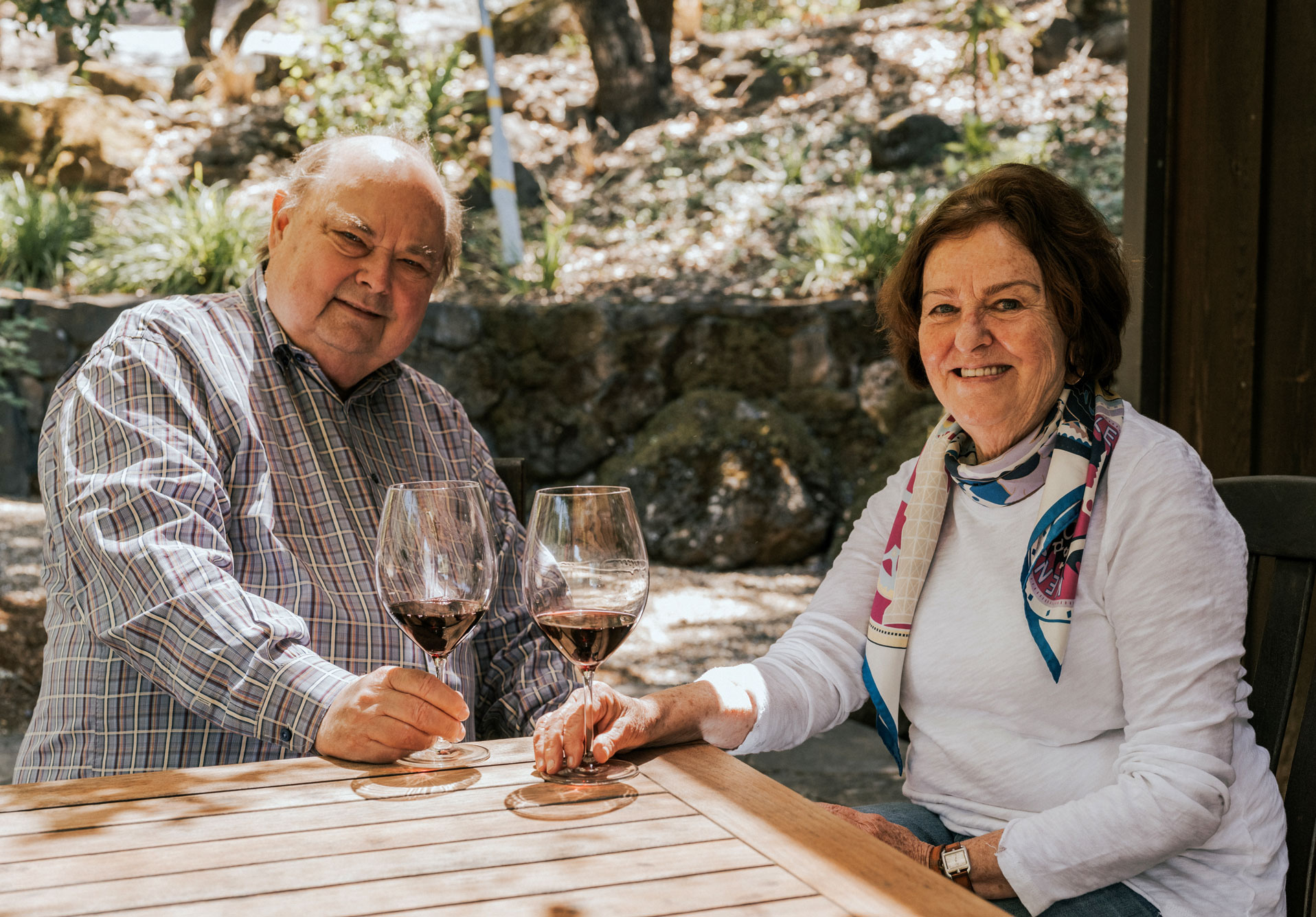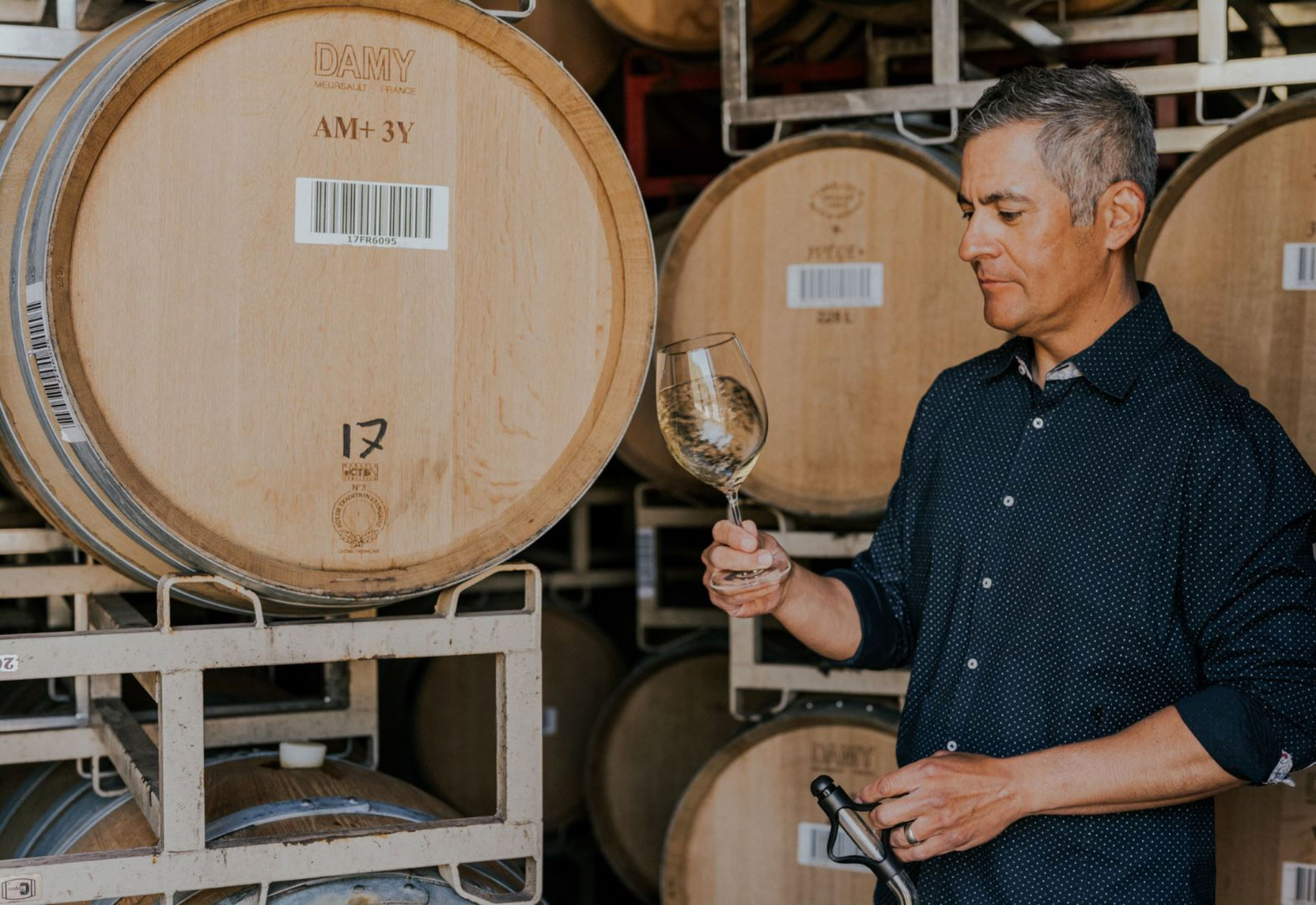Neyers Vineyards About Page
Our Team

Bruce & Barbara Neyers
Bruce & Barbara were college sweethearts at the university of Delaware. Bruce’s brief stint in the Army brought them to San Francisco in 1970 where they soon became a part of the exciting Bay Area food & wine scene. They moved up to Napa Valley and ultimately purchased the Conn Valley Ranch in 1984 and in 1992 Neyers Vineyards was born.

Bruce was born in Wilmington, Delaware in December 1946. He graduated from the University of Delaware with a Bachelor of Science in chemistry in 1968, then worked briefly as a production chemist for Budd-Polychem. Having been in the Reserve Officers’ Training Corps and commissioned as a second lieutenant upon graduation, he started his two-year military commitment in January 1969. He trained at the Army Officer’s Guided Missile School in El Paso, Texas, then was assigned to South Korea where he eventually commanded an air-defense guided missile battery along the Korean demilitarized military zone. In May 1970, he was reassigned to the Presidio of San Francisco and was later honorably discharged in January 1971. While he had no formal wine industry training, he was interested in the subject, and learned of a French wine importing company in San Francisco that he began to visit and ultimately was offered a job there after his discharge.
Bruce’s wife, Barbara, also grew up in Wilmington, Delaware and they married in August 1967, while undergraduate students at the University of Delaware. Barbara was hired as an elementary school teacher after their move to San Francisco, and they enjoyed the lives of people actively involved in the emerging wine and food scene in the 70’s in the San Francisco Bay Area.
Bruce’s first winery job was at Mayacamas Winery in the Napa Valley in January, 1972. He spent two years at Mayacamas as assistant winemaker to Bob Travers, and while employed there went to school under the extension work-study program at University of California, Davis. In April 1974, Bruce and Barbara moved to the Nahe region in Germany where he worked as an apprentice winemaker, returning to the US in March 1975. That same month, he was hired by Joe Phelps who was starting the winery that bears his name, and he worked there for 17 years, leaving in 1992 as general manager.
In 1984, Barbara and Bruce bought a 35-acre parcel in Conn Valley and began to develop it for vineyards with the idea of starting their own winery. A few days after resigning from Phelps, Bruce was offered and accepted the newly created position of national sales manager for Berkeley-based importer Kermit Lynch. He held that job until his retirement in 2017, having grown the business many times over during his years there. The 100+ French wine producers with whom he worked had an enormous influence on his winemaking ideas, farming practices and production techniques.
Barbara continued her career as a teacher for a few more years and then in 1979 she began to pursue her love of food and cooking, as a chef and eventually manager at the heralded Chez Panisse Restaurant in Berkeley, where she worked for 20 years. They raised three children on their ranch in the Conn Valley area of the Napa Valley, where they now grow grapes while they jointly manage the winery, now a joint venture with Trinchero Family Estates.
Winemaker: Tadeo Borchardt

Winemaking Through the Lens of the Old World
In Tadeo Borchardt’s view, winemaking is best learned in the vineyard and the winery. His wine education was born from hands-on experience, guided by a few accomplished mentors, all of whom eschewed formal winemaking studies in favor of on-the-job training.
“One advantage of learning how to make wine outside of traditional schooling is you don’t have to unlearn a specific approach,” Borchardt explained. “There’s no set of rules telling you what you can and can’t do. Inspiration and intuition are the guiding forces.”
The sink-or-swim approach proved invaluable for Borchardt, who grew up in Arizona and southern California. Family meals were home-cooked. Saturday mornings were spent watching cooking shows on PBS, long before cable networks began delivering round-the-clock food programming. With the dream of one day becoming a chef, Borchardt worked in restaurants, both in the kitchen as a dishwasher and chef, and in front-of-the-house roles. He earned his bachelor’s degree in education from the University of Arizona and taught social studies and math to middle schoolers, but there was no denying the powerful undercurrent that pulled him toward all things food.
Borchardt left teaching and returned to the restaurant world, eventually working at a small, chef-owned restaurant in Scottsdale, Arizona. It was there that a thirst for wine knowledge began to take hold.
Restaurateur Roger Roessler, who was building a wine label in Santa Rosa with Copain winemaker Wells Guthrie, sent Borchardt to the Russian River Valley to help with harvest. What was intended to be seasonal work quickly turned into a full-time position as Guthrie’s assistant. Borchardt later traveled to New Zealand to experience harvest in the southern hemisphere at Craggy Range, before returning to California to join Neyers Vineyards in 2004.
Over the years, Borchardt has accompanied owner Bruce Neyers on trips through the wine regions of France, where multi-generational winemakers grow up among the vineyards, learning by doing. The instinctual approach of Old World winemakers in Burgundy and the Rhone Valley left an indelible impression on Borchardt. The wines he crafts for Neyers are heavily influenced by the philosophical approach of French winemakers.
“The Old World ethos allows a wine to taste like what it wants to taste like,” Borchardt said. “I prefer to step back a little and let the wine express its terroir naturally. The grape variety, the vineyard, the grower—these are the storytellers behind a wine.”
Ultimately, Borchardt makes the kind of wine he wants to drink. Experimenting with different vineyards, fermenting block by block, blending to convey the grape variety and its terroir in every glass.

